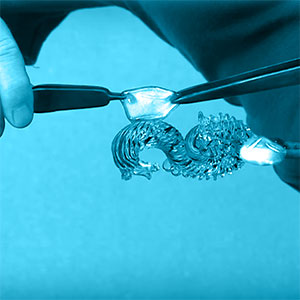Venetian glass is a type of glass made primarily in Venice, Italy. It is world-renowned for being colorful and elaborated, developed by the thirteenth century. Towards the end of the century, the centre of the Venetian glass industry moved to the small Murano island.
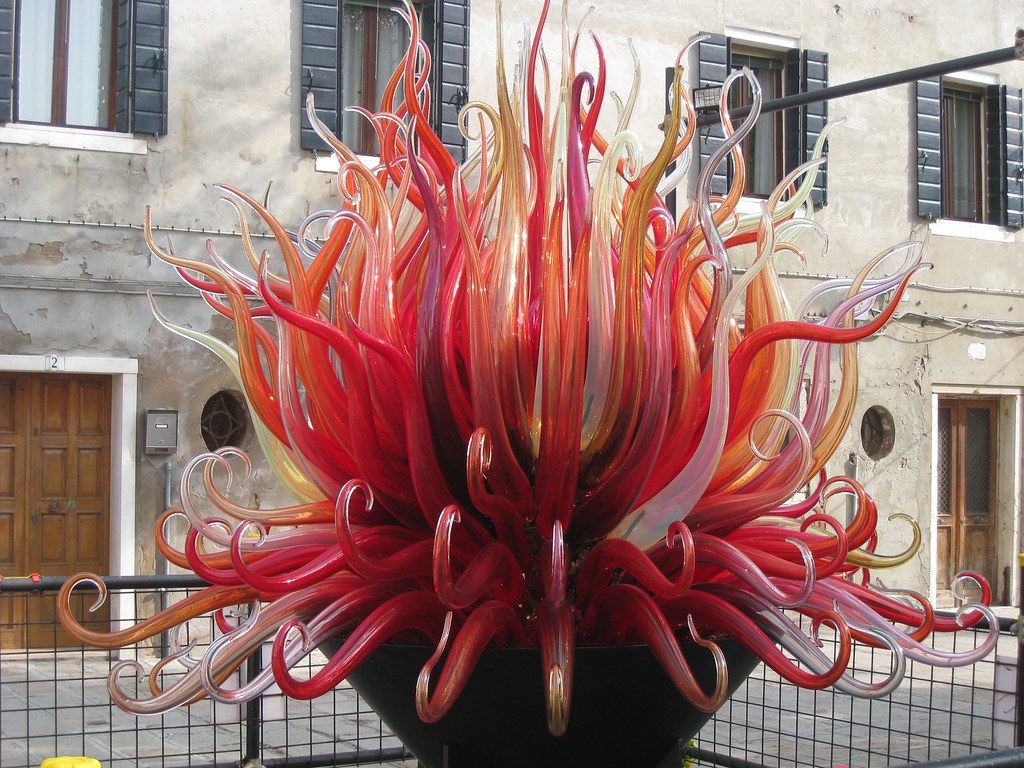
image source: https://search.creativecommons.org/photos/463d36d8-c588-42db-bb42-dbf2a9c78138 by jay galvin
When was glass discovered?
Before learning how to make glass, people used natural glass, especially obsidian (volcanic glass), which was used for the production of knives, arrowheads, jewelry, and money.

image source: https://search.creativecommons.org/photos/929dcd13-b5d3-48c2-8e8f-8546feb081b1 by Following Hadrian
The ancient Roman historian Pliny suggested that Phoenician merchants made the first glass in the Syria region around 5000BC. But the first man-made glass, based on archaeological evidence, developed around 3500BC in Eastern Mesopotamia and Egypt, and the first glass vases were made about 1500BC. For the next 300 years, the glass industry increased and then decreases. In Mesopotamia, it was revived in the 700BC and Egypt in 500 BC. For the next 500 years, Egypt, Syria, and other countries along the eastern coast of the Mediterranean Sea were centers for glass production.
At first, it was difficult and slow to make glass, as the glass melting furnaces were small and produced just enough heat to melt the glass. But in the 1st century BC, Syrian artisans invented the blowgun and this revolutionary discovery made glass production easier, faster, and cheaper. The production of glass flourished in the Roman Empire and from Italy it spread to all the countries under its dominion. In 1000 AD the Egyptian city of Alexandria became the most important glass processing center. Across Europe, the art of making stained glass on churches and cathedrals reached its peak in the finest windows of the cathedrals of Chartres and Canterbury produced in the 13th and 14th centuries.
When the first Venetian glassworks were developed?
The origins of glass processing in Venice date back to the times of the Roman Empire when modeled glass was used for lighting in bathing establishments. Venice emerged as an important center of glass production in the 8th century, thanks to the union of the Roman experience with the skills learned from the Byzantine Empire and trade with the Est. One of the first glass furnaces dating back to the 8th century was discovered by archaeologists in 1960.
At the end of the 1200s, the production of glassware of the best quality was the main industry of the city, confirmed by the establishment of the Glassmakers Guild who established regulations for the craftsmen. The purpose of the guild was to safeguard trade secrets and ensure the profitability of the industry, in this regard, a law of 1271 prohibited the importation of foreign glass or the use of foreign glassworkers.
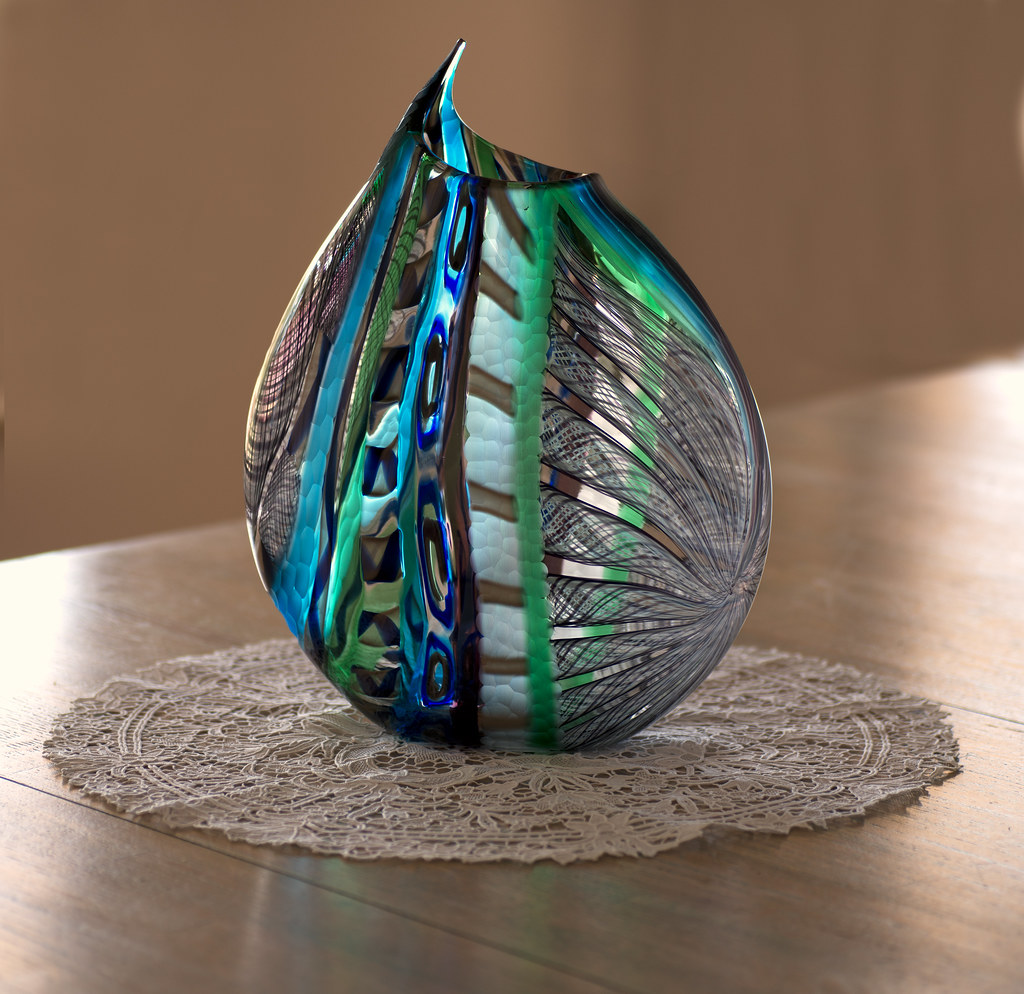
image source: https://search.creativecommons.org/photos/9d16db0a-8f39-48a1-b2b0-358cb63df544 by snowpeak
In 1291 an even more radical law was passed which laid the foundations for the affirmation of Murano as the main center of glass production. This law required that all the furnaces used for the production of glass were transferred from Venice to Murano to avoid the risk of fire from the furnaces that spread over the wooden structures of Venice. Many historians agree that the real motive of this law was to isolate glassmakers so as not to reveal trade secrets. A subsequent law of 1295 that prohibited glassmakers from leaving the city confirms this theory.
The artisans who work in the glass trade were well rewarded and enjoyed privileged social status, and their daughters were allowed to marry the richest and noblest of Venetian families. In this way, the Venetian government made sure that the glassmakers encouraged their offspring to carry on the trade, and those trade secrets remained in the families and fueled creative processes that lead to innovation and further success. This, together with Venice’s convenient location at the crossroads of trade between East and West, gave Venice the monopoly power in the production and sale of quality glass throughout Europe that lasted for centuries.
How was Murano glass produced?
In Renaissance Venice, glassmaking was a complicated, laborious, and expensive undertaking. The islands of Venice and Murano, are small and surrounded by shallow waters. None of the essential elements involved in glassmaking were native or nearby.
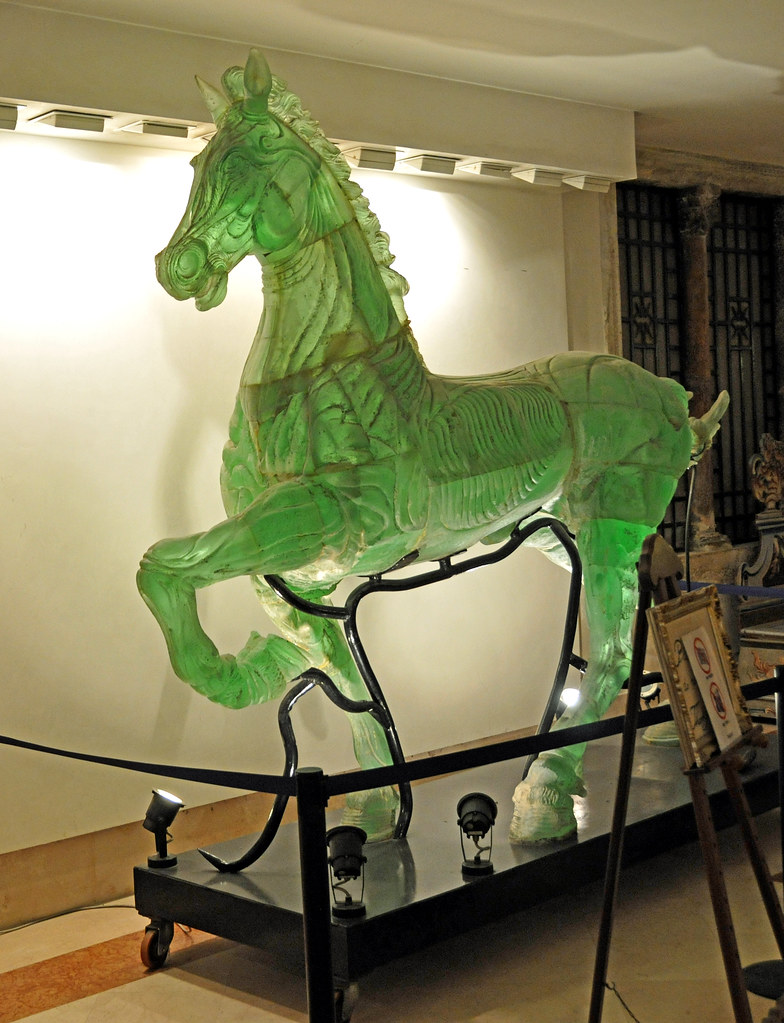
Image source: https://search.creativecommons.org/photos/ac3b9412-75ff-4c9b-a5b1-a7d23f858a6b by archer10 (Dennis)
Raw materials were imported from near and far. In Renaissance Venice, glass required what in modern terminology, is called a former, a flux, a stabilizer, and a bleach. The former was silica. Glass can be made using beach or river sand, often accompanied by iron, which gives the glass a green color. We know that, in the mid-14th century, the Venetians imported quartz pebbles from the Ticino and Adige Rivers as a source of silica. The pebbles were pulverized into a fine powder before being used. The flux, indispensable for lowering the melting point of the silica, was acquired in the form of vegetable ashes. Already in 1285, it was imported from Syria and Egypt. Coastal plants were subsequently imported from Sicily and Spain, transformed into Catania soda, and used as a fondant. Less clear are the possible sources of stabilizing agents—alumina, lime, and magnesia. Modern chemical analysis of several Venetian Renaissance glass samples reveals their presence, and we can be sure that the glass contained effective stabilizers because so many objects survive intact. It is still uncertain among scholars whether the stabilizers entered the glass in the form of “pollutants” or whether they were intentionally added in some other form. The last key ingredient in making colorless glass was manganese dioxide, known as “glassmakers’ soap.” The use of this compound as a decolorizer in glassmaking has been known since at least 1290. It was purchased in Piedmont, about 250 miles west of Venice.

Image source: https://search.creativecommons.org/photos/93cf951b-2532-4698-b199-3dc9def3e699 by liewcf
What are Murano glass main decorative techniques?
.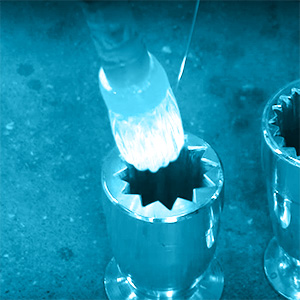
DIP (OPTIC) MOLDING
Glass is decorated with a cylindrical monobloc or truncated cone mold with the decorated interior. The mold is open at the top so that glass can be dipped to create a pattern on the outside of a glass collection or a bubble.
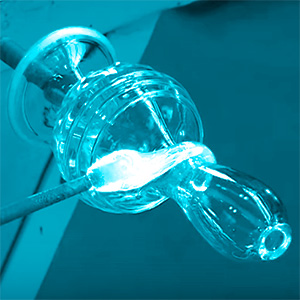
WRAPS
Strings of glass extending around a vase.
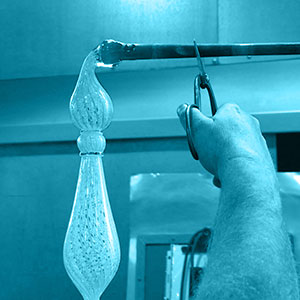
FILIGRANA
(Italian, “filigree glass”) Generic name of blown glass made with colorless, white, and sometimes colored reeds. The filigrana style originated on the island of Murano in the 16th century and spread to other parts of Europe where façon de Venise glass was produced. The Murano Manufacturing continued until the 18th century and resumed in the 19th century.
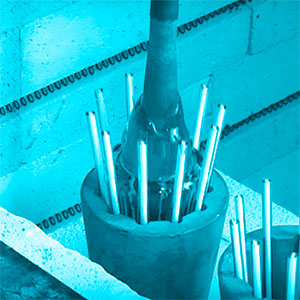 FAUX RETICELLO
FAUX RETICELLO
A technique that produces an appearance similar to traditional reticello without the bubble at the intersection of the rods.

FULL-SIZE MOLD-BLOWING
Inflate a hot glass parison into a mold. The glass is forced against the internal surfaces of the mold and takes its shape, along with any decoration it carries.
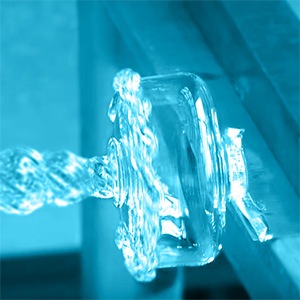
GILDING, HOT APPLIED
The process of decorating glass using gold leaf, gold paint, or gold dust. The gilding can be applied to measure, or mixed with mercury. It is then usually fixed to the glass by heat. Gold leaf can be collected on a hot glass collection.
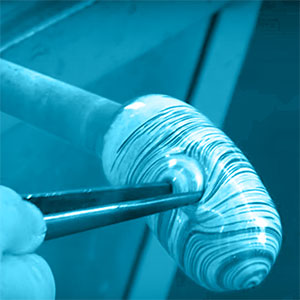 COLORED FRIT, TWISTED AND MANIPULATED
COLORED FRIT, TWISTED AND MANIPULATED
Batch ingredients such as sand and alkali, which have been partially reacted by heating but not completely dissolved. After cooling, the frit is ground into a powder and melted. Fritting (or sintering) is the frit production process.
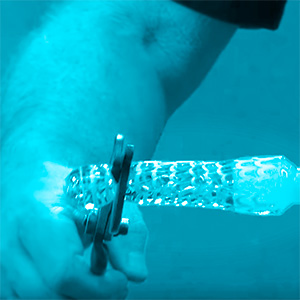
A PENNE (COMBED THREADING)
Decoration in which a spiral wire (casing) of coloured glass is manipulated with a tool to create a festooned pattern on the surface of a vase.
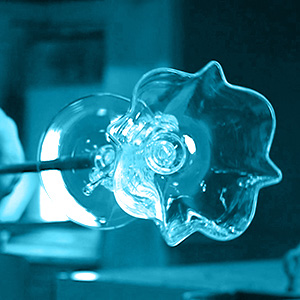
SPECIAL EDGE SHAPES
Shape the edges by folding or shaping a hot container.
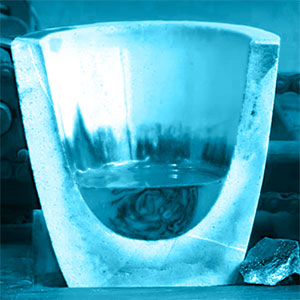
CHALCEDONY/AVENTURINE GLASSES
Marbled glass with brown, blue, green, and yellow scrolls in imitation of chalcedony and other banded semiprecious stones. Chalcedony was first made in Venice at the end of the 15th century.
(from French aventure, “chance”) Translucent glass with shimmering inclusions of gold, copper, or chromic oxide, first produced in Venice in the 15th century. Aventurine glass mimics the mineral of the same name, a variety of translucent quartz speckled with mica or other minerals.
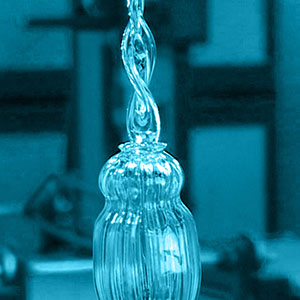 KUTTROLF STEM
KUTTROLF STEM
(German) A flask with a neck is divided into two or more tubes. Kuttrolf, which has Roman antecedents, was produced by German glassworkers in the late Middle Ages; it is also found among Venetian and façon de Venise glasses from the 16th and 17th centuries.
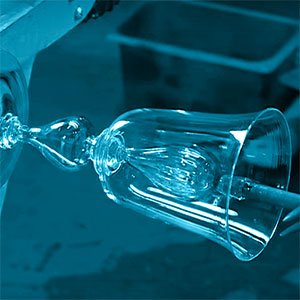 INTERNAL DECORATIVE ELEMENT
INTERNAL DECORATIVE ELEMENT
A colored glass bulb (usually aqua) is attached to the inside of a vase.
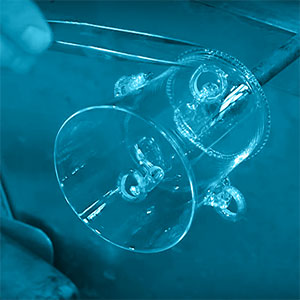
FREE-FLOATING RINGS
A decoration in which glass rings are trapped (but not fixed) on the outside of a vase, using tiny strips of molten glass.
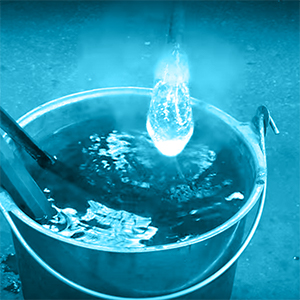 ICE GLASS
ICE GLASS
A decorative effect that makes the glass surface look like shattered ice. It is obtained by repeatedly immersing a hot glass parison in cold water and quickly withdrawing it. The thermal shock creates cracks on the surface, which gives a frosted appearance after the parison has been reheated to allow the forming process to continue.

MILLEFIORI
A decoration obtained by setting small slices of reeds in the molten glass with regular motifs in a contrasting color.
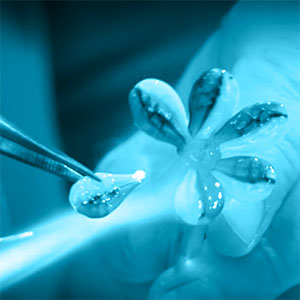
FLAMEWORKED
A technique that allows forming objects from rods and tubes of glass which, when heated with a flame, become soft and can be manipulated into the desired shape. Previously, the source of the flame was an oil or paraffin lamp used in combination with pedal bellows; today gas-powered torches are used.
Small amounts of molten glass are added on top of other decorative elements (such as “wings’), then manipulated with tools.
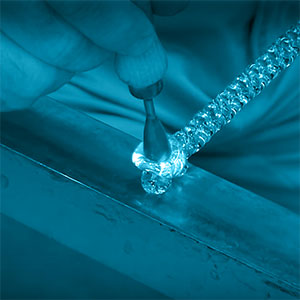
PRUNTS
A patch of glass is applied to a glass object as a decoration, but also to allow a firm grip in the absence of a handle.
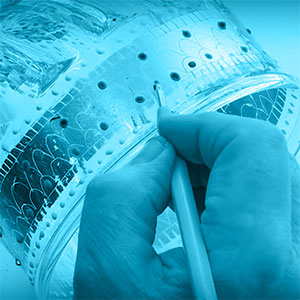
ENAMELING AND GILDING (BOTH APPLIED COLD, AND THEN FIRED)
The glazes consist of intensely colored glass (or colorless glass mixed with a metal oxide) that has been finely ground and mixed with a liquid medium to facilitate painting. After its application on a cooled object, the decoration is fired at a high temperature for permanence. Gold is usually applied in the form of a slightly thicker leaf or foil; the gold and the enamels are baked together.
Images source: http://renvenetian.cmog.org/visual-guide
What is the difference between Murano glass and any other glass?
Murano glass is glass in the chemical sense of the term. However, this glass is different from the glass of the window panes. Murano glass is created only on the island of Murano, located within the city limits of Venice in Northern Italy. This glass is composed of silica, soda, lime, and potassium fused in a special oven at a temperature of 1500°C to reach the liquid state. Often gold or silver foils are added to the glass mixture, along with minerals such as copper for sparkles, zinc for white, cobalt for blue, manganese for purple, and so on.

image source: https://search.creativecommons.org/photos/29618439-5546-454e-9f84-fc7999fd6d28 by Mark Hintsa
The dough is then mouth-blown or hand-crafted by master glassmakers using special techniques and basic tools, many of which developed in the Middle Ages and little modified since then. This glass processing method results in unique creations with rich colors and beautiful patterns and shapes, real “works of art”. None of the glass objects still in production has such a rich history and artistic value as great as Murano glass.
Info source:
http://www.historyofglass.com/
https://www.glassofvenice.com/murano_glass_history.php
http://renvenetian.cmog.org/chapter/material-making-glass-renaissance-venice
